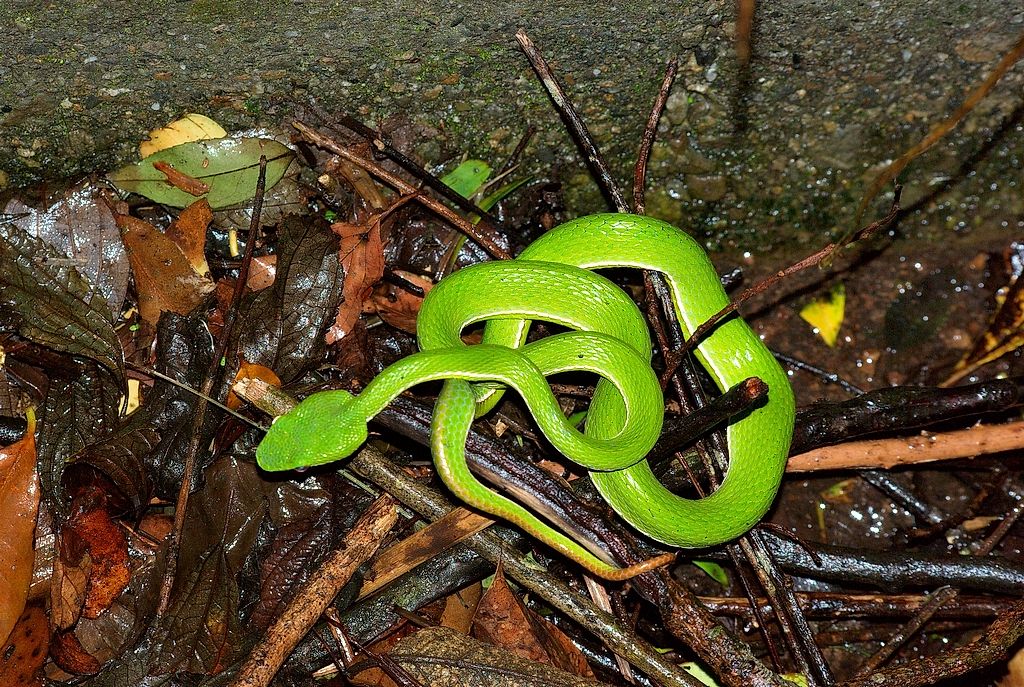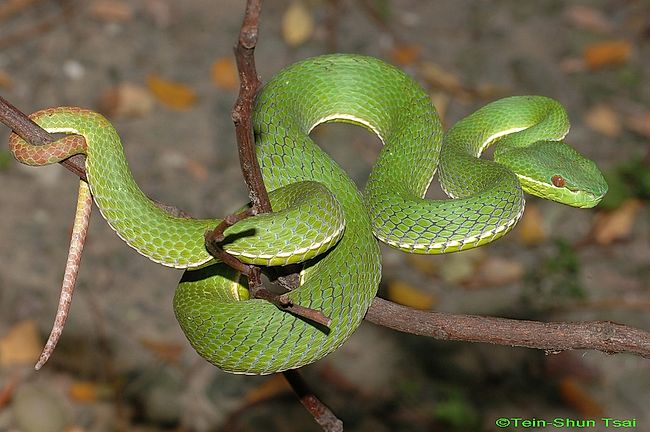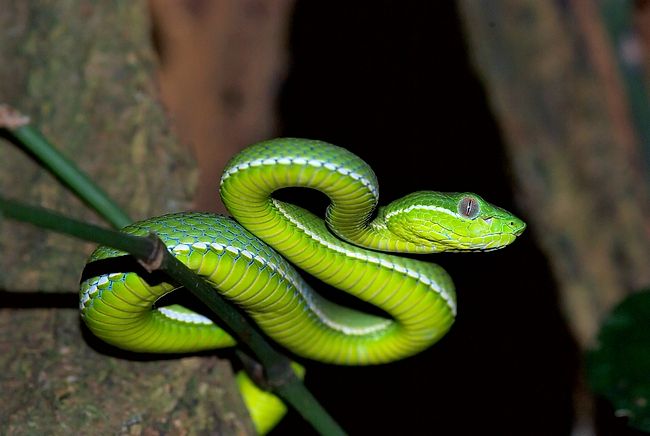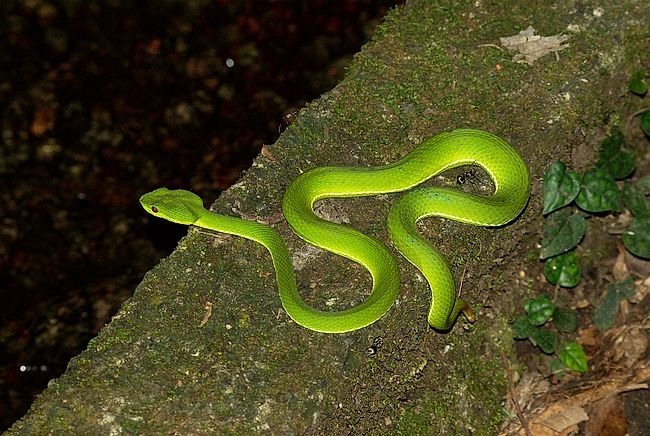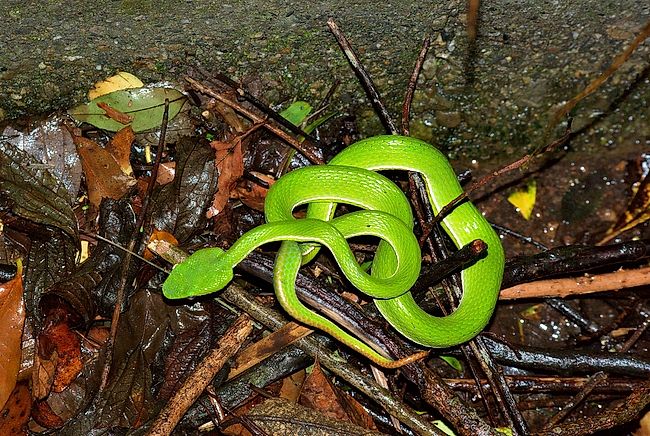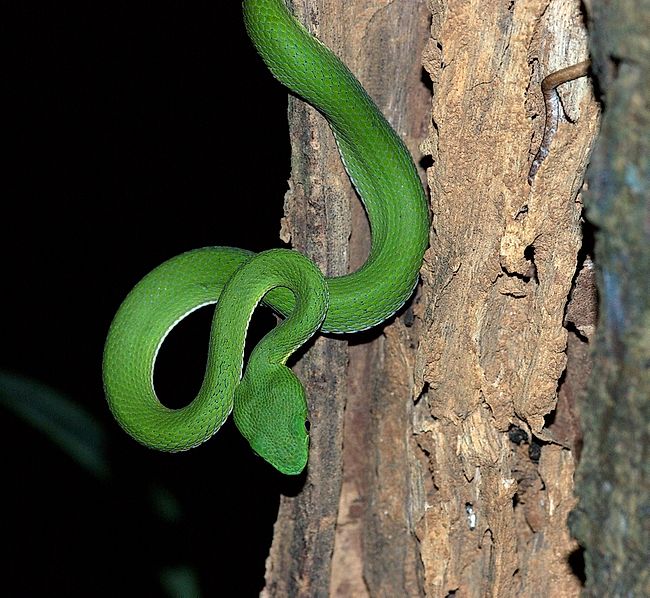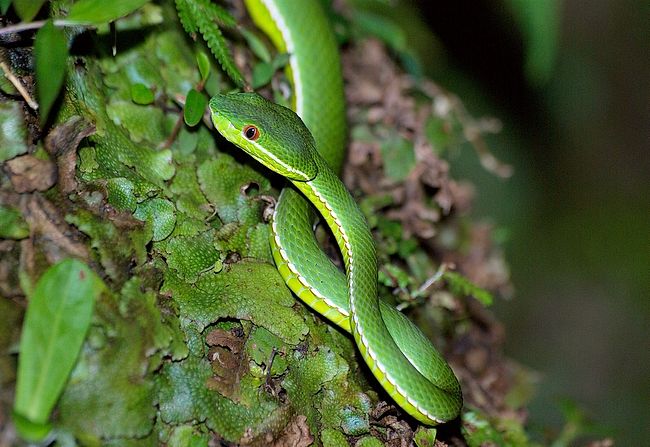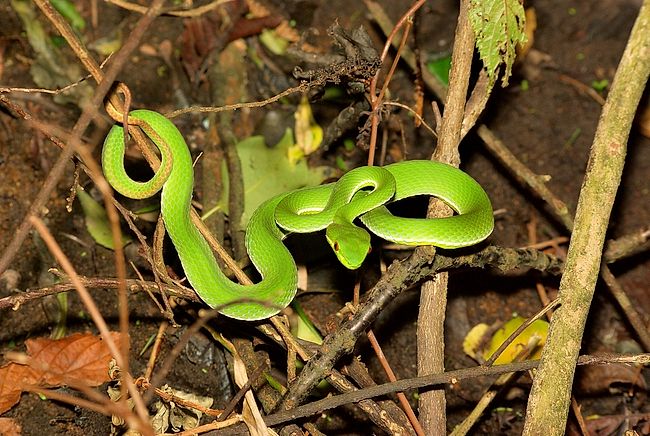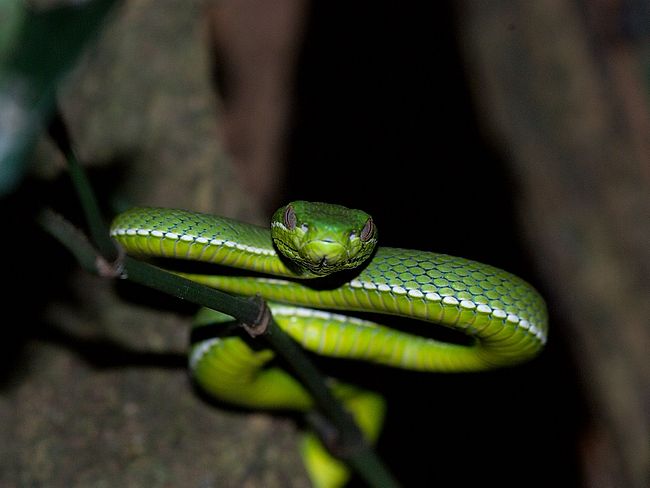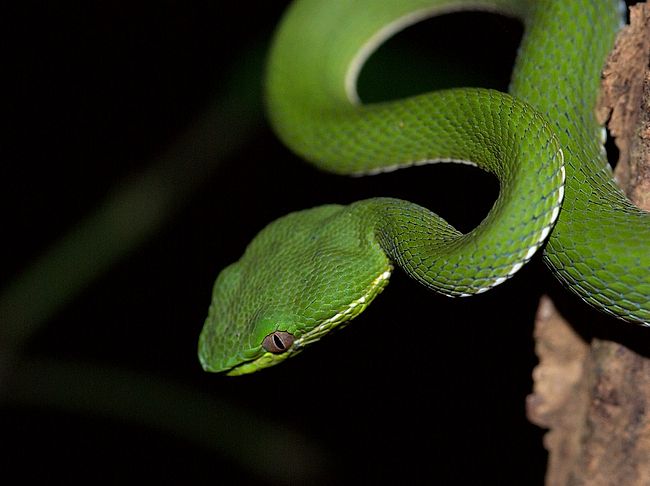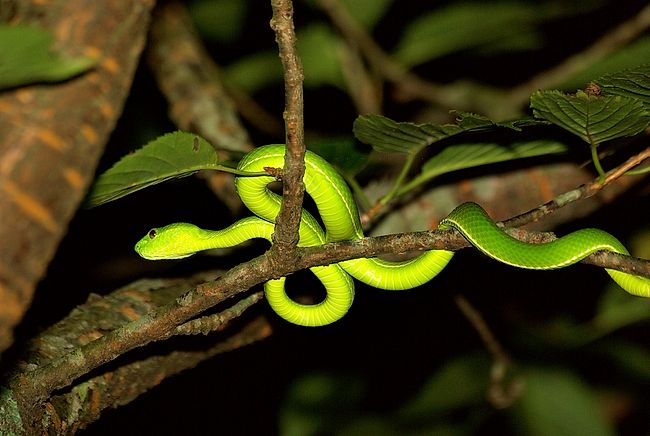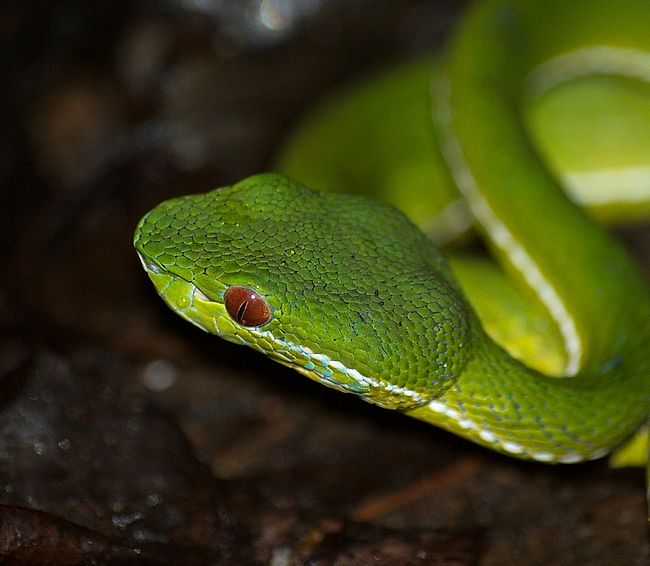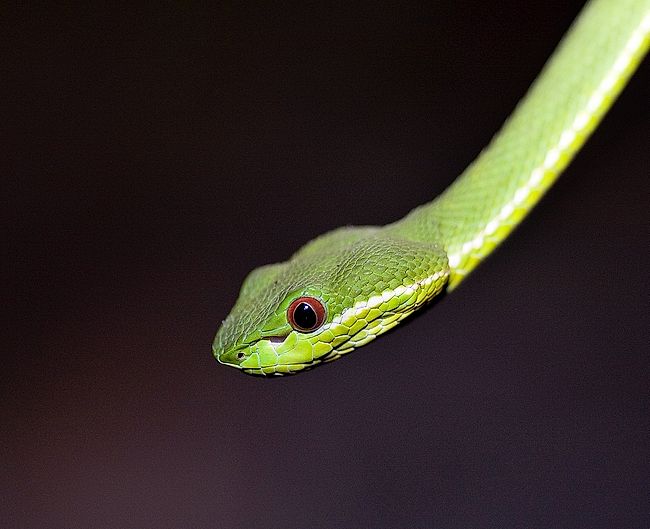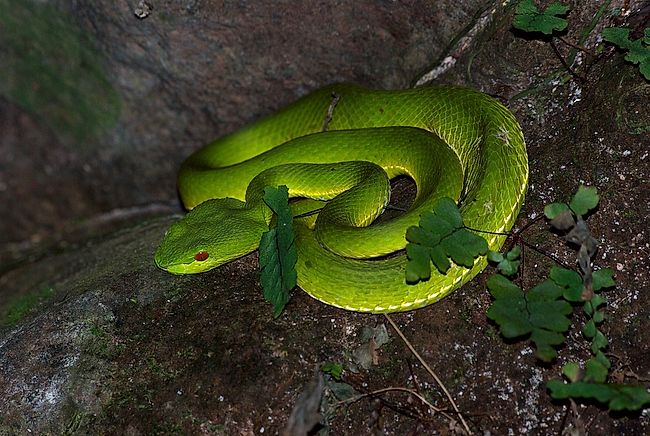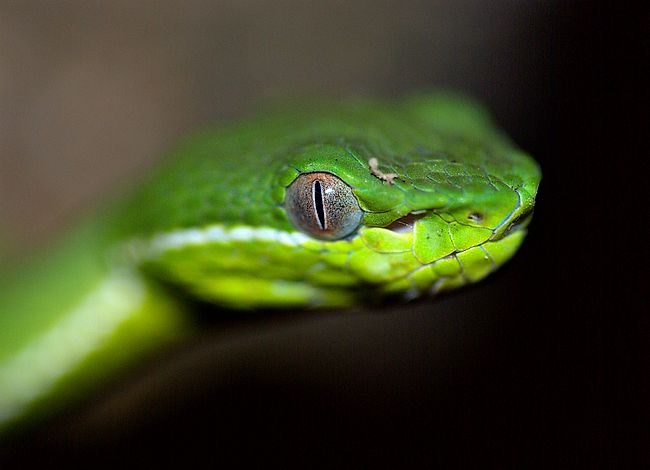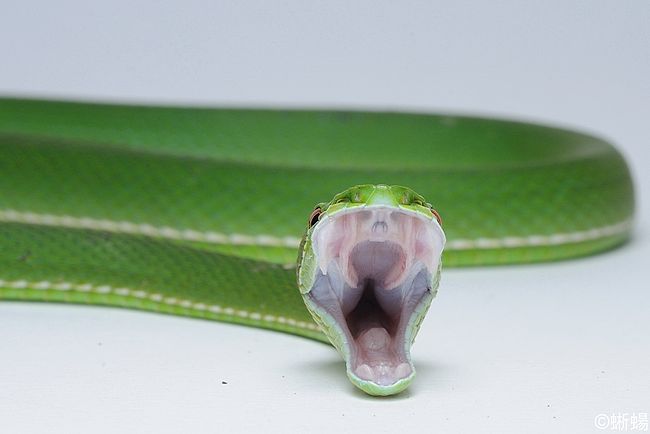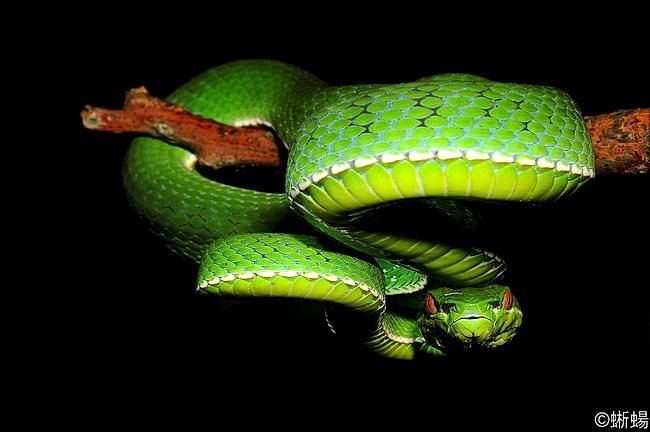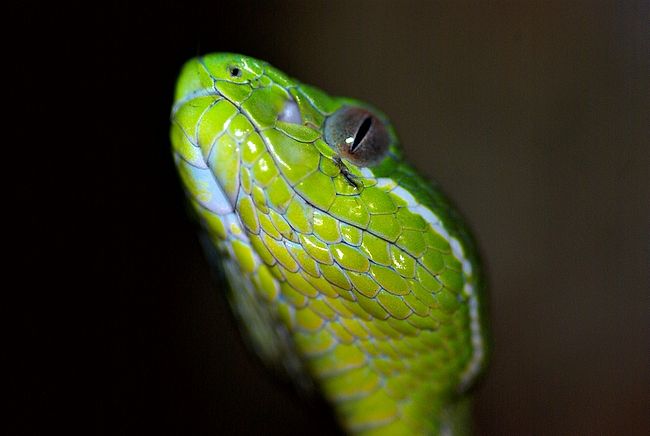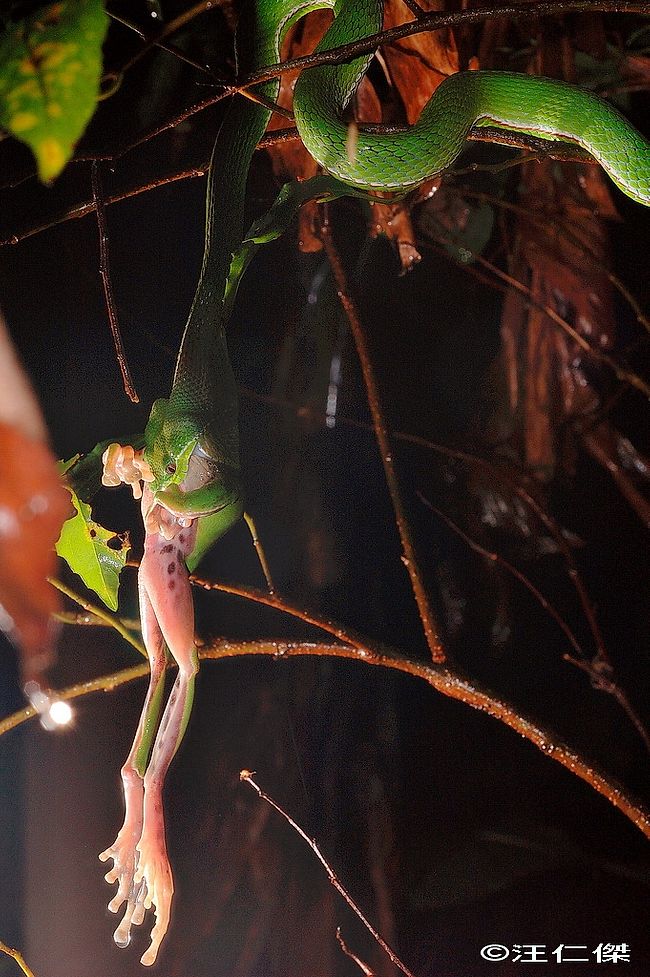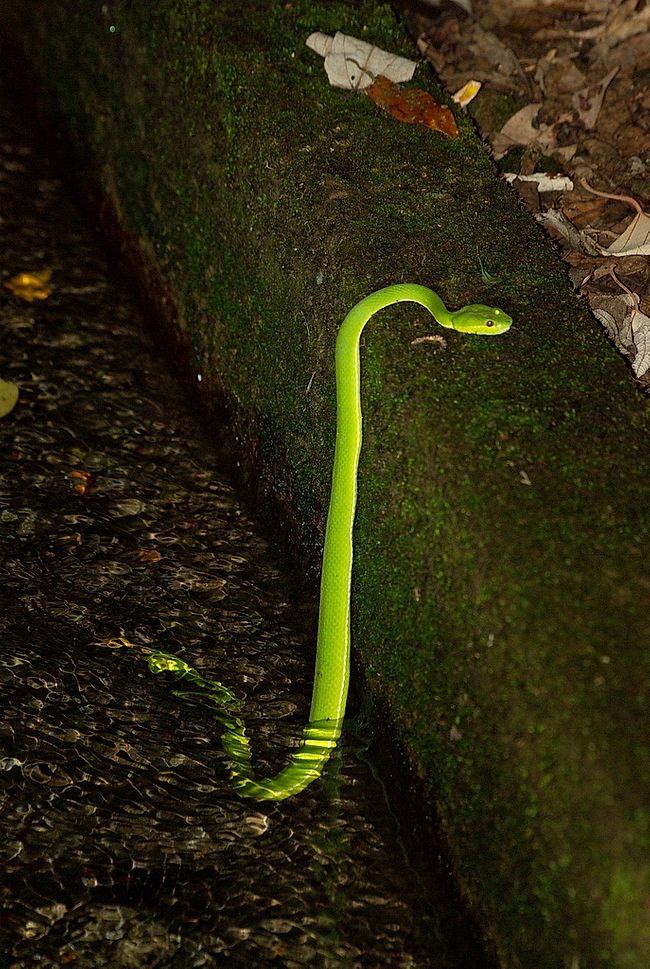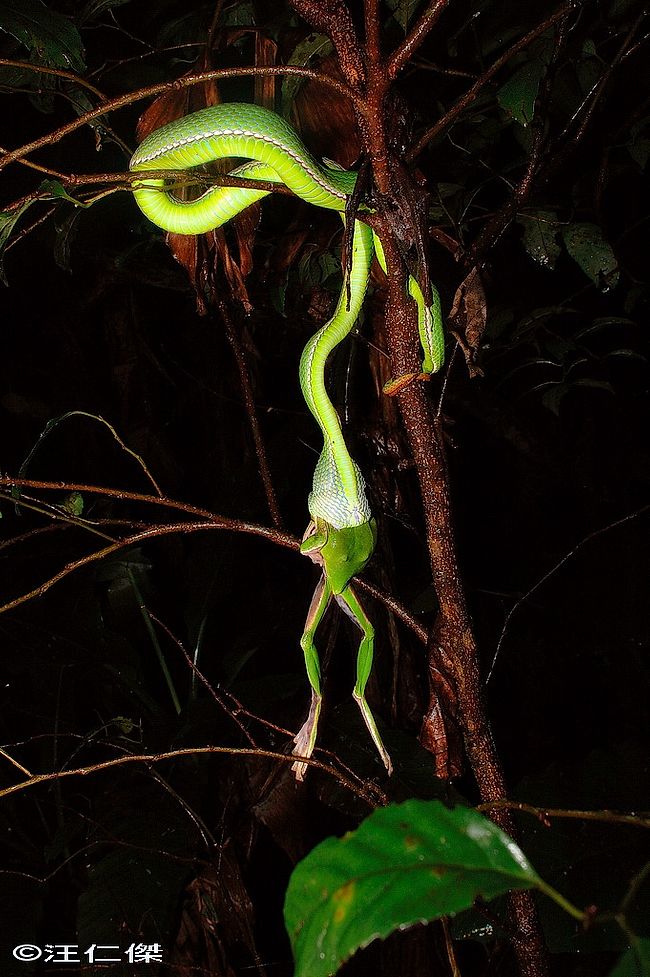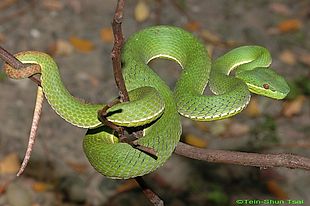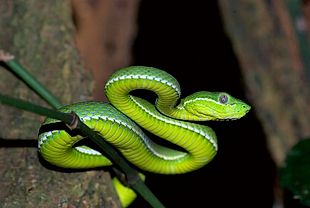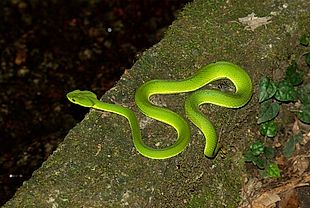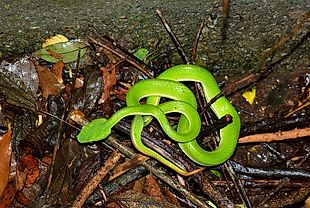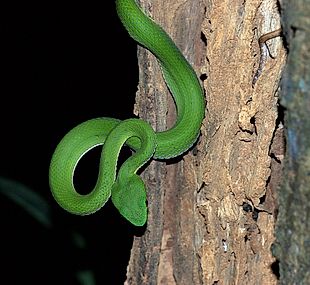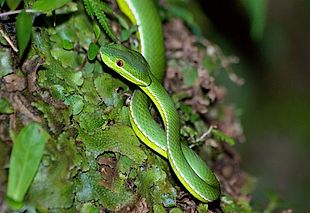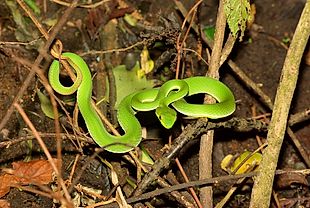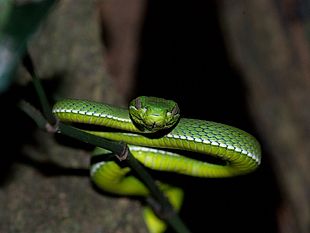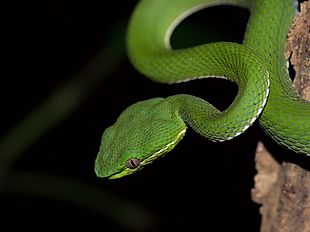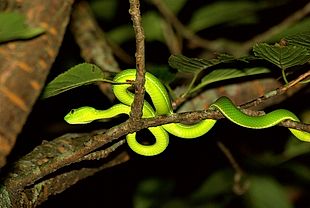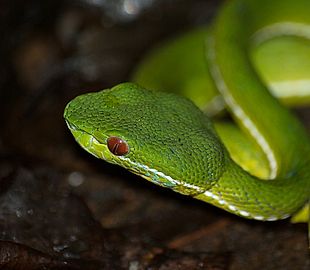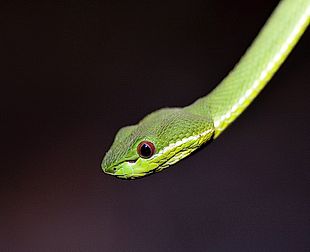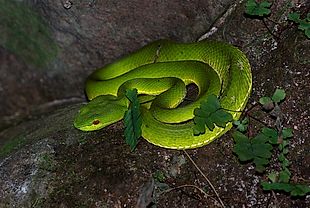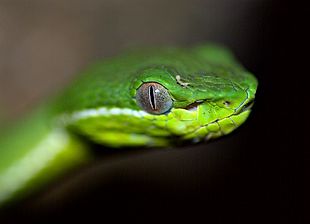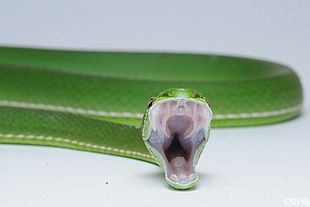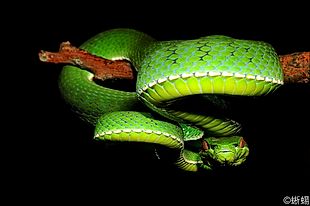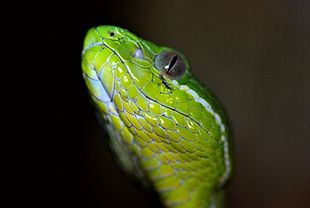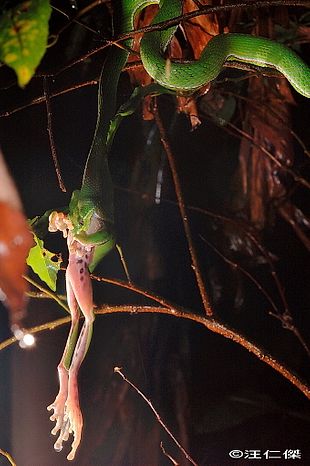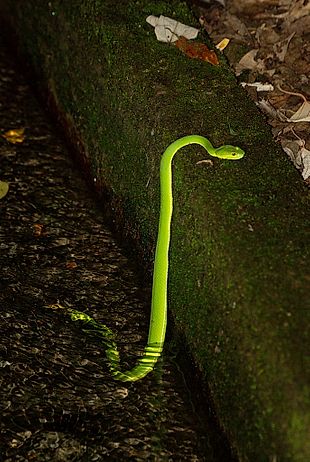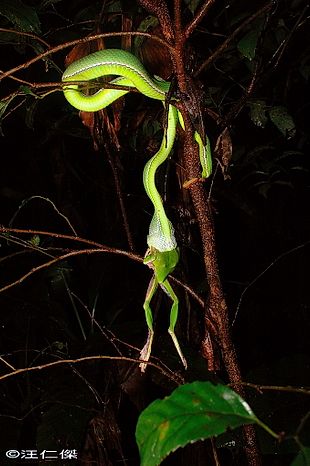Trimeresurus stejnegeri stejnegeri
Chinese Green Tree Viper, Bamboo Viper
赤尾青竹絲 (chi4wei2qing1zhu2si1)
Status: Not Protected
VENOMOUS!
Field Reports
Family
Viperidae; subfamily Crotalinae (Pitvipers)
Max. length
90 cm
Occurrence in Taiwan
Very common throughout Taiwan and Orchid Island, mainly up to 1500 m.
Global Distribution
China (from Yunnan north to SE Gansu, east to Jiangsu, south to Hainan; including Jilin), Taiwan, Nepal, India (Sikkim, Assam), Myanmar, SE Thailand, Vietnam
Description
Small snake; total length up to 90 cm. There are 15-29 (21 at mid-body) rows of scales, which are keeled and rough. Head is broad, roughly triangular, covered with small and smooth scales, and distinct from neck; body is stout or robust; tail is small. There is a prominent angular ridge from upper eye to end of nose, and a prominent pit three to five times the size of the nostril between eye and nostril. Eye is medium-sized, high on head, forms slight bulge on upper head; iris is distinctly rusty brown or brick red, flecked with cream, and pupil is vertically elliptical, black, with narrow margin of cream or light orange. Tongue is dark gray to black, with stem lighter than fork tips. Fangs are large, movable, in sheath in anterior part of upper jaw. Upper head and body are uniform dark green to chartreuse, while sides of head and ventral surface are light yellow green to pale green. Tail is variable, may be same green as rest of body, but usually tinged dorsally with dull diffuse rusty red or brown. Frequently a white or light cream line can be found extending from the lower edge of eye posteriorly over the corner of mouth, and in males white line may be bordered by another brick-red or rust-colored line. A white stripe, bordered ventrally with dark red extends along the first body scale row in most males, whereas there is no such dark red stripe in most females. Very few individuals are without lateral stripes. Anal scale is entire, and subcaudals are paired.
Biology & Ecology
This nocturnal and arboreal pitviper is often found resting or foraging near mountain streams or roadside ditches.
Frogs are its primary prey, but small mammals, lizards, and birds are also taken. Females give birth to 2-15 young
in a clutch in summer. Hatchlings measure about 26 cm in total length and usually mature one year later. It has a
prehensile tail which assists somewhat in its movements, and may vibrate as a defensive warning sign.
Although it is not an aggressive animal, most snake bites in Taiwan are caused by this species, as farmers often handle
plants in which the snake rests during the day. Its venom contains hemorrhagic toxins, and the wound often swells and bleeds.
Especially in the countryside, even the smallest medical facility carries antivenom for T. s. stejnegeri bites.
T.stejnegeri is highly cold-tolerant (active down to at least 14° C), and one of the few species that can still be found in
abundant numbers all through the rather chilly winter in North Taiwan. It is most active during or just after rainy periods.
Etymology
Trimeresurus: "The meaning of Trimeresurus, which suggests 'three-part tail', is obscure." (Gotch, A.F. 1986. Reptiles - Their Latin Names Explained. - Blandford Press. 176 pp.);
stejnegeri: after Leonhard Hess Stejneger, (1851-1943), a Norwegian-born herpetologist who moved to the US in 1881 and
became curator of reptiles at the Smithsonian Institution in 1889.
The Chinese name 赤尾青竹絲 (chi4wei2qing1zhu2si1) means "Red-tailed (赤尾) green (青) bamboo (竹) sliver (絲)".
Notes
T. s. stejnegeri is the most common venomous snake species in Taiwan and also the only one not protected by law.
The harmless, invertebrate-eating Greater Green Snake is frequently mistaken for T. s. stejnegeri and subsequently killed.
However, while both snakes are green, the differences are quite obvious at a closer glance: the bamboo viper has a triangular
head, red eyes, a white stripe along both sides of the body, and a reddish-brown tail. The Greater Green Snake has an oval
head, black eyes, no stripes, and a green tail. Its scales are also much shinier than the matte, dull coloring of the
Bamboo Viper.
Further Info



